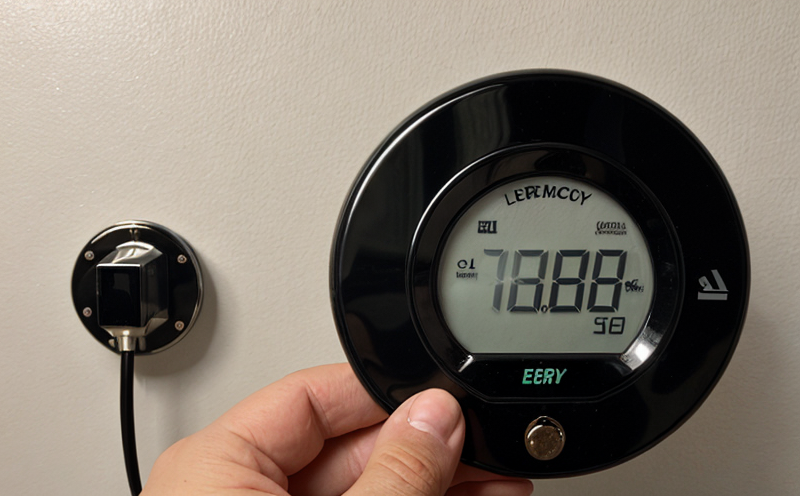CSA C368 Energy Efficiency Testing for Room Air Conditioners
The CSA C368 standard is a pivotal document in North America that sets out the requirements and procedures for determining the energy efficiency of room air conditioners. This service ensures compliance with the stringent criteria established by this standard, which helps manufacturers optimize their products' performance while ensuring they meet regulatory and market demands.
Energy efficiency testing is crucial for several reasons. First, it contributes to reducing electricity consumption, thereby lowering operational costs for consumers. Second, it aligns with environmental sustainability goals by minimizing the carbon footprint of air conditioning systems. Third, compliance with such standards enhances a company's reputation in the marketplace and can open doors to new markets.
The testing process involves multiple stages that ensure comprehensive evaluation. Specimens are subjected to controlled environments where various performance metrics are measured under standardized conditions. These tests include power consumption measurements, cooling capacity assessments, and energy efficiency ratio (EER) evaluations. The results obtained from these tests are meticulously documented and compared against the benchmarks specified in CSA C368.
One of the key aspects of this service is the use of advanced instrumentation to measure energy consumption accurately. This includes power meters that can capture minute fluctuations in electricity usage, ensuring precise data collection. Additionally, temperature and humidity sensors are deployed to simulate real-world operating conditions, providing reliable performance metrics.
The testing process also involves rigorous specimen preparation. Before undergoing any tests, the air conditioners are preconditioned to ensure they start from a consistent state. This step is critical as it ensures that all units being tested behave uniformly under identical initial conditions. Post-testing analysis often reveals insights into potential improvements in design or manufacturing processes.
CSA C368 compliance testing not only benefits manufacturers but also provides significant advantages for consumers. By ensuring energy-efficient products, the standard helps reduce greenhouse gas emissions and supports sustainable development efforts globally. For businesses, meeting these standards can lead to cost savings through reduced energy bills and enhanced brand reputation.
| Applied Standards | Description |
|---|---|
| CSA C368:2019 | This standard specifies the methods for measuring, calculating, and expressing the energy efficiency of room air conditioners. |
| IEC 61724-1:2015 | An international standard that provides a framework for testing and rating the performance of commercial building ventilation systems. |
The use of internationally recognized standards like IEC 61724-1 complements CSA C368, providing a broader context within which room air conditioners are evaluated. This dual-standard approach ensures that products meet both regional and global benchmarks for energy efficiency.
Applied Standards
| Standard | Description |
|---|---|
| CSA C368:2019 | This standard specifies the methods for measuring, calculating, and expressing the energy efficiency of room air conditioners. |
| IEC 61724-1:2015 | An international standard that provides a framework for testing and rating the performance of commercial building ventilation systems. |
The application of these standards ensures that the testing process adheres to internationally recognized protocols, enhancing credibility and ensuring accurate results. Compliance with CSA C368 is essential as it reflects current best practices in energy efficiency measurement, making it a cornerstone for manufacturers aiming to produce high-performing, environmentally friendly products.
Scope and Methodology
The scope of the testing under CSA C368 encompasses various aspects of room air conditioners aimed at assessing their energy efficiency. This includes evaluating power consumption, cooling capacity, and energy efficiency ratio (EER). The methodology involves placing specimens in controlled environments where they operate under specified conditions to ensure consistent results.
The testing process begins with preconditioning the units to a standard operating temperature and humidity level. Once set up, the air conditioners are allowed to stabilize before measurements begin. Power consumption is recorded using high-precision meters placed in close proximity to each unit. Simultaneously, cooling capacity and EER are measured under standardized conditions.
After completing these initial stages, further tests may be conducted to assess additional performance metrics such as part-load ratio (PLR) and seasonal energy efficiency ratio (SEER). These supplementary evaluations provide a more comprehensive understanding of the air conditioner's operational characteristics across different usage scenarios.
The data collected during these tests are then analyzed against the criteria set forth in CSA C368. Any discrepancies between the actual performance and the required benchmarks indicate areas for improvement or potential issues that need addressing. This detailed analysis ensures that only compliant units pass inspection, maintaining high standards of quality and reliability.
Use Cases and Application Examples
| Use Case | Description |
|---|---|
| Manufacturing Compliance | Ensures that newly developed models meet the stringent requirements of CSA C368, facilitating smoother market entry. |
| R&D Optimization | Aids in identifying design flaws or inefficiencies by providing detailed performance data for iterative improvement. |
| Regulatory Compliance | Helps businesses stay abreast of changing regulations and maintain compliance without disruptions. |
In practice, this service has numerous real-world applications. For instance, manufacturers can use the results to refine their product lines, ensuring they meet both regional and international standards. Regulatory bodies also leverage these tests to enforce compliance across industries, promoting fair competition and environmental responsibility.
Consumers benefit indirectly from this testing by gaining access to more energy-efficient appliances that help reduce electricity bills while contributing positively to environmental conservation efforts. By adhering to CSA C368, businesses can gain a competitive edge in the marketplace, attract environmentally conscious customers, and foster long-term sustainability initiatives.





